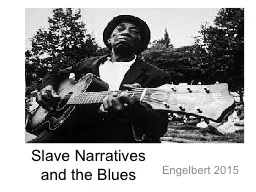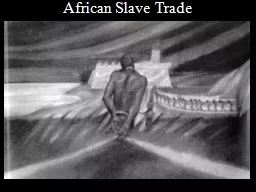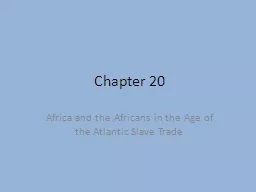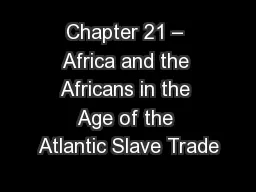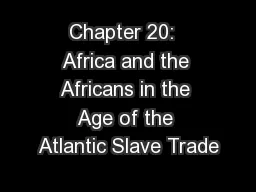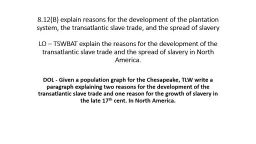PPT-The Slave Community Combined African
Author : kittie-lecroy | Published Date : 2018-01-31
and European traditions Most evident on big plantations Transmitted from one generation to the next through the slave family By the 19 th century slaves had
Presentation Embed Code
Download Presentation
Download Presentation The PPT/PDF document "The Slave Community Combined African" is the property of its rightful owner. Permission is granted to download and print the materials on this website for personal, non-commercial use only, and to display it on your personal computer provided you do not modify the materials and that you retain all copyright notices contained in the materials. By downloading content from our website, you accept the terms of this agreement.
The Slave Community Combined African: Transcript
Download Rules Of Document
"The Slave Community Combined African"The content belongs to its owner. You may download and print it for personal use, without modification, and keep all copyright notices. By downloading, you agree to these terms.
Related Documents






